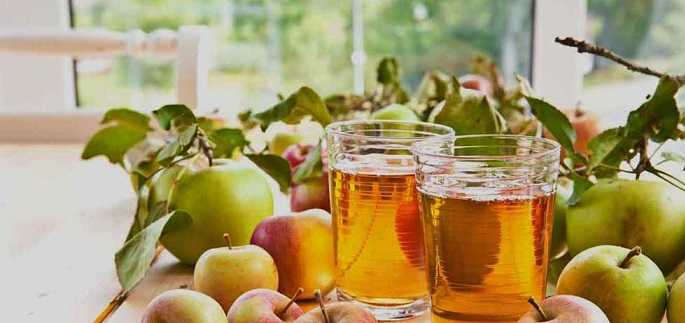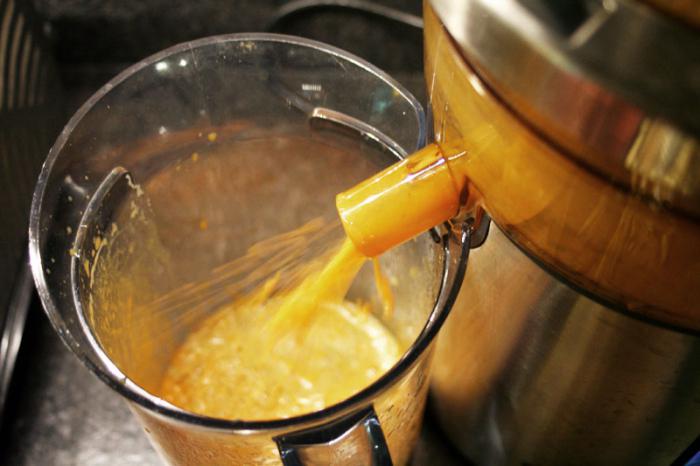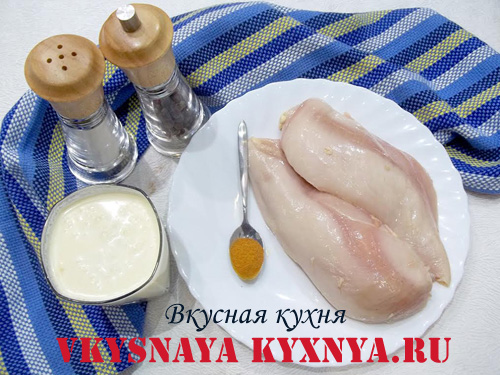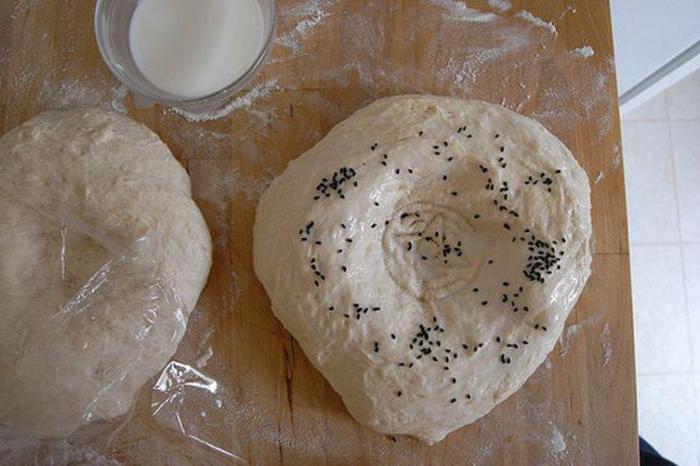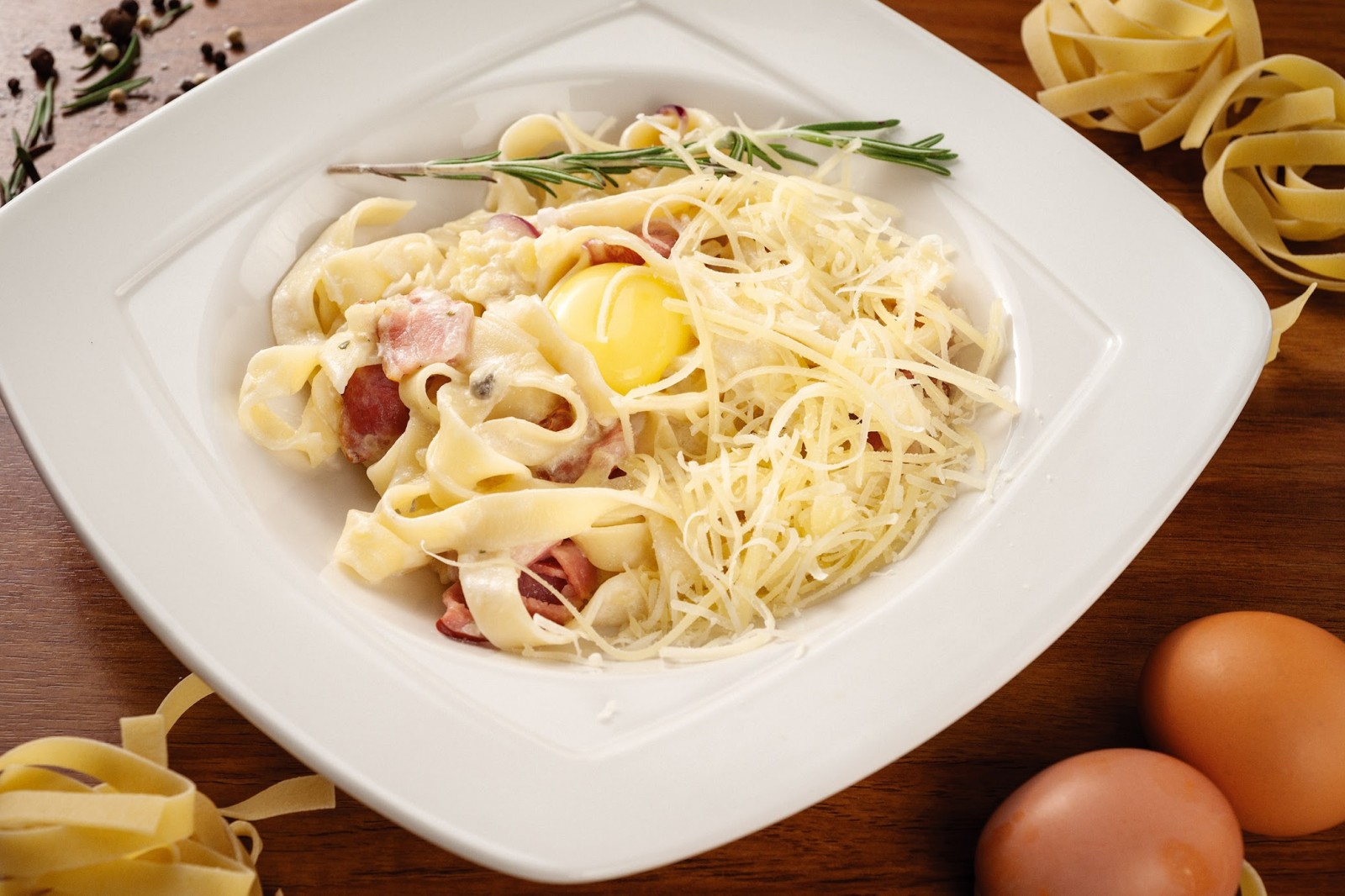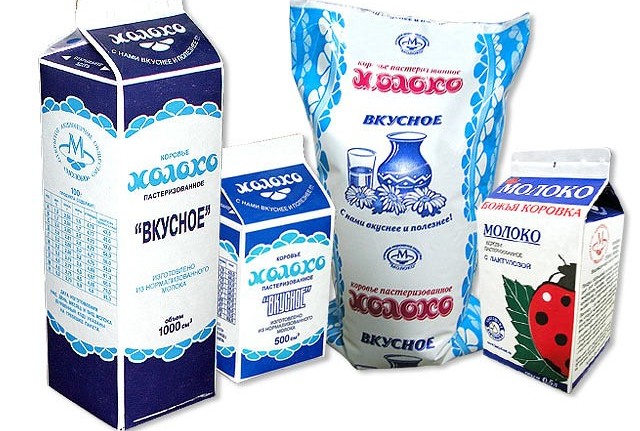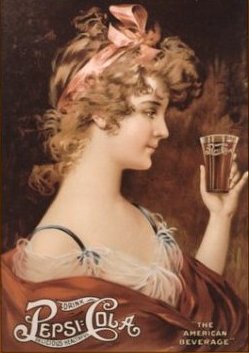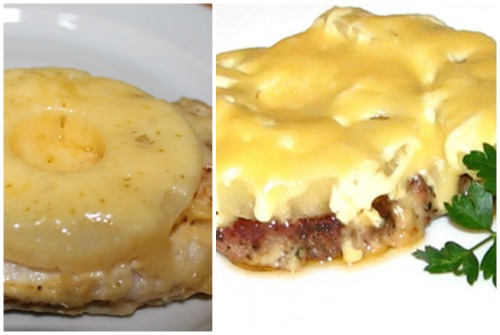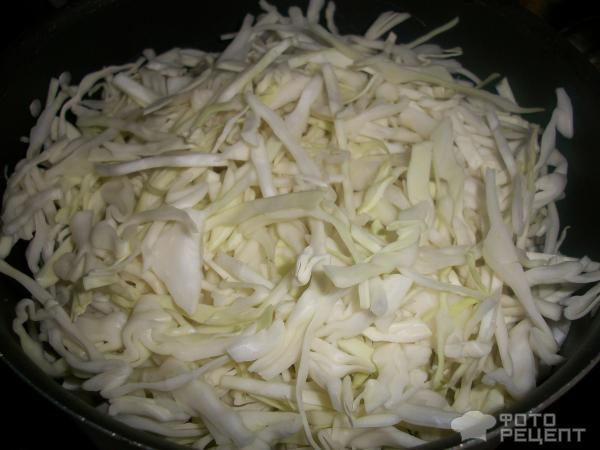Chinese pear: characteristics, varieties and beneficial properties. The benefits of pears and Jerusalem artichoke for the body, recipes for their use
Many today are interested in the Chinese pear, the benefits and harm that it can bring. After all, such fruits appeared on the shelves of our stores recently. And the unusual appearance of this fruit, of course, raises questions. In fact, the Nesha pear - as it is commonly called - is distinguished by excellent taste and is very healthy.
Chinese pear and its properties
This fruit has many names. Sometimes it is called a crystal pear, sometimes it is a sand pear. Indeed, the light shade of its peel is associated with a shade of sand, but the reason is prosaic - it is a kind of granular structure of its pulp, resembling grains of sand. It is also called Taiwanese or Asian. Some people think this is the same as a Japanese pear. But in fact, this is not entirely true. The Chinese pear is a hybrid, during the selection of which the Yamanashi pear was used. But this is not the same plant.
Chinese pear is now grown not only in China. It is cultivated in Israel, Korea, Japan. However, in Russian conditions, this tree does not bear fruit, and in some regions it even freezes. Therefore, in Russia mainly hybrids of Chinese pears and European varieties are grown. But the Nihonnasi pear is frost-resistant and survives well even in the middle lane.

As for the Yamanashi pears, they have always been distinguished by increased hardness and sour taste. Chinese breeders decided to turn these shortcomings into advantages, and they succeeded. The result is a pear, the shape of which is a cross between an ordinary European pear and a round apple. The average weight of fruits is 290 g, although there are varieties with smaller fruits - up to 200 g. Their peel is thin, usually light yellow, but under it there are characteristic dark spots. The flesh of all varieties is dense, firm, but at the same time juicy, has a creamy tint and a characteristic crunching on the teeth. The taste of the fruit is very pleasant, with a slight acidity.
Such qualities of the Chinese pear made it very popular in the East. Its fruits can be used for the preparation of vegetable and fruit salads, to which it gives a light spicy notes, it is good for desserts. Supporters of a healthy lifestyle are interested in how many calories are in Chinese pear. 100 g of fresh fruit contains only 42 kcal, so this fruit can be a great snack.
What is useful?
The dietary properties of this fruit are not its only advantage. The pulp of fruits contains ascorbic acid, which boosts immunity and is a natural antioxidant. It also includes vitamin PP, which is necessary for normal blood circulation and vascular strengthening. Chinese pear is also useful for its mineral composition, which contains potassium, magnesium and many other elements. Its fruits and vitamins are rich.
Chinese pear, whose calorie content is quite low, is used in diet food. Its use is due not only to low energy value, but also to a large number of dietary fiber, which cleanse the intestines of toxins and well affect the functioning of the digestive system as a whole. A large amount of fiber, contributing to the digestion of food, helps to accelerate the metabolic processes in the body. Chinese pear can be used as a main product for fasting days. With her, the feeling of hunger will not torment, and digestion will improve, and metabolism will accelerate.

Most of all, this fruit contains B vitamins, which are very useful for the nervous system and cognitive functions, so before exams or important speeches, you should include these fruits in your diet - a little, only 2-3 pears a day, but this will have a tangible effect. The fruits also contain vitamins E and K, which are very important for maintaining hormonal balance. Vitamin E is especially beneficial for women. It is also an antioxidant that fights premature aging and wrinkles. And although an overdose of synthetic vitamin leads to trouble, the natural substance contained in the pulp of fruits has no contraindications and restrictions. These fruits contain a lot of folic acid, which is very important for the body.
These fruits are well tolerated transportation over long distances. But, unfortunately, not all varieties are designed for long-term storage. There are varieties that can begin to rot at room temperature in a week, and are stored in the refrigerator for no longer than 14 days. The fact that the fruits began to deteriorate will be noticeable by the appearance of dark spots. So in the store you need to carefully examine each fruit.

The amount of minerals in Chinese fruit is simply amazing. The leader is phosphorus and magnesium (11 mg and 8 mg per 100 g), followed by calcium, potassium, selenium, manganese, zinc and copper. This mineral composition has a beneficial effect on the condition of the skin, hair and nails. Calcium is very useful for strengthening bones, so Chinese pear along with cottage cheese, nuts and lactic acid products can be used to prevent osteoporosis.
There are no perfect products. There are people with individual intolerance to certain fruits, including Chinese pear. But this fruit does not bring any tangible harm. It has no contraindications or side effects.
Varieties of Chinese pears
Chinese pear is a common name. In total, there are several dozen varieties and hybrids in the world. But in Russia, most of them do not grow, although several several varieties can be found in domestic stores:
- Big Korean pear. Its fruits are beautifully rounded and golden in color, the surface is dotted with small dots. Pear has a characteristic sweet-sour taste and very juicy pulp. The weight of one fruit is on average about 180-200 g. This variety is harvested in the second decade of September. The fruits are perfectly stored until mid-January.
- The variety is popular. Hosui. These are self-pollinating winter-hardy trees, the fruits of which ripen around mid-August, but are uneven, of medium size, their peel has a rich bronze-brown color. The main feature is sweet and very hard flesh. The weight of the fruit is on average 195 g. Pears of this variety are stored until about the first decade of December. The Kosui variety is similar to them. Its fruits are distinguished by a yellow-bronze color, quite dense and hard flesh. But they are smaller. The disadvantage of this variety is that these fruits do not withstand long-term storage.
- Variety Morning Freshness. Gardeners love it for its frost resistance and low risk of infection with bacterial and fungal infections. It differs in small fruits. Their glossy skin is bright green. The surface of the fruit is covered with small grayish dots. The mass is small, on average it is 155 g. Although these fruits ripen early, they are stored little, only about a month.
Recently, the Far Eastern pear has become widespread, which resembles a classic Chinese pear in appearance. Indeed, the variety is a complex hybrid form of the Chinese, European and Ussuri pears, which made it possible to preserve all the advantages of each species and supplement them with high yield and frost resistance. Unfortunately, the fruits of this variety do not differ in particular keeping quality.
Chinese pear is one of the sweetest fruits in the world, for this reason it is often the most beloved. White apple, pineapple and apricot are the tastes that make up this fruit. Nutritionists and doctors quite often use it in their activities. The Chinese pear is also called Asian or Taiwanese, but in other countries such as Israel, Japan and Korea, this fruit has been successfully grown for a long time, and, I must say, it is no different from the Chinese counterparts. A whole bunch of useful substances that positively distinguish it from all other fruits, which will certainly delight dieters.
This fruit has a rather sweet taste, but in ancient times it was sour, breeders were able to correct this defect. In appearance, the fruit resembles the same apple and pineapple. So nevertheless, the Chinese pear is the benefit or harm - we will analyze in more detail.
What is the use of the Chinese pear? Chinese pear has useful substances necessary for humans, one hundred grams contains two grams of fiber, and a fifth of a gram of ash. This fruit is enriched with many useful components such as zinc, copper and magnesium, phosphorus and potassium occupy higher lines in content. Vitamin C, K and choline also expose the Chinese pear in the best light, everyone needs them.
Chinese pear - calories

The Chinese pear with the exotic name "Neshi" is the result of selection, thanks to which a fairly hard and sour fruit has acquired excellent taste and juiciness. Now it is grown not only in China, but also in many Asian countries, where it is valued for its pleasant taste, delicate pulp and rich biochemical composition.
The composition and calorie content of pears
Nashi is a small, rounded-shaped fruit that resembles both an apple and a pear. Her taste combines sweetness with a pleasant and spicy sourness. The very low calorie content of Chinese pear and the content of useful substances in it make this fruit a valuable nutritional component when dieting.
One average fruit weighs about 200 g. Given that 100 g of Nesha contains only 42 kcal, then the calorie content of 1 piece of pear is 84 kcal. With such a low energy value, the Chinese pear has a rich composition of minerals and vitamins.
- Potassium - about 250 mg, which more than covers the daily requirement of the body for this mineral. Potassium regulates the water-salt balance, takes an active part in the work of the nervous system, stimulates the intestines, is necessary for the urinary system and support normal blood pressure.
- The content of phosphorus (22 mg), magnesium (16 mg), calcium (8 mg) allows you to enrich the body and balance the work of internal organs and systems during dieting or during active physical exertion.
- Vitamins B1, B2, B5, B6, B9, PP, C, K, E, choline make Nesha a valuable dietary product that can and should be consumed to replenish the body with necessary nutrients.
Regular consumption of Chinese pears helps cleanse the intestines, balance the digestive system, improve metabolism, and replenish potassium, phosphorus, and folic acid (B9).
Calorie pears of Chinese garden dried and dried
Pear (1 pc. Per day) will practically not affect the daily calorie content, but it will delight you with its delicate taste and enrich the diet.
Chinese pear is one of the sweetest fruits in the world, for this reason it is often the most beloved. White apple, pineapple and apricot are the tastes that make up this fruit. Nutritionists and doctors quite often use it in their activities. The Chinese pear is also called Asian or Taiwanese, but in other countries such as Israel, Japan and Korea, this fruit has been successfully grown for a long time, and, I must say, it is no different from the Chinese counterparts. A whole bunch of useful substances that positively distinguish it from all other fruits, which will certainly delight dieters. This fruit has a rather sweet taste, but in ancient times it was sour, breeders were able to correct this defect. In appearance, the fruit resembles the same apple and pineapple. So nevertheless, the Chinese pear is good or bad - we will analyze in more detail.
- Chinese pear calories and sizes
Tasty and sweet fruit, no matter how surprising it sounds, but has a fairly small calorie content, so it is successfully used in slimming dishes. The weight of the Chinese pear is about one hundred eighty grams, about forty-five of which is water.
Chinese pear beneficial properties
Useful properties, low calorie content, taste and unusual appearance - these are the main distinguishing features of the Chinese pear. Thousands of people from all over the world regularly consume this fruit, someone for weight loss, someone because of the taste, someone because of the beneficial properties. But we must remember that everything is good in moderation, an overabundance of the substances contained in the Chinese pear can have a bad effect on the well-being of a person.
Do not also forget that some people are allergic to this fruit, so you should not eat a lot at the first purchase, you must first try at least one fruit. Exotic fruit can cause stomach pains, for this reason it is also worth trying a small amount of Chinese pear to start with.
Unfortunately, quite often this crop is grown using harmful fertilizers, in order to avoid poisoning, it is necessary to carefully remove the skin before consuming the Chinese pear.
Is the Chinese pear good and bad, or is it good?
What is the use of the Chinese pear?
The benefits and harms of eating a Chinese pear
Chinese pear has useful substances necessary for humans, one hundred grams contains two grams of fiber, and a fifth of a gram of ash. This fruit is enriched with many useful components such as zinc, copper and magnesium, phosphorus and potassium occupy higher lines in content. Vitamin C, K and choline also expose the Chinese pear in the best light, everyone needs them.
The composition, among other things, includes folic acid, thiamine and other components. Low calorie content and useful substances are the main positive aspects of the Chinese pear and, you see, are important. How many calories are in Chinese pear? In this fruit, only forty-two calories per hundred grams. The energy value of Chinese pear is quite low, which can be emphasized from the low calorie content of this culture. In order for the Chinese pear to bring maximum benefits, you need to eat it about three times a day for the average fruit.
Nutrition Facts of Chinese Pear
Carbohydrates in this fruit are only seven grams of the total mass (average), and there are almost insignificant amounts of proteins and fats, together they all equate to zero as much as eight-tenths of a gram. How can a calorie content remain quite small with such a sweet taste? This is the achievement of breeders.
Useful properties and their actions:
- Fiber of a Chinese pear helps to cleanse the intestines, the digestive system functions better, which is very good for both health and mood.
- Phiolic acid has a positive effect on pregnancy, a very important property of Chinese pears.
- Vitamin C, as you know, has a positive effect on the immune system, and there is more than enough of it in this culture.
- Calcium makes bones and hair healthy and strong.
- Phosphorus has a beneficial effect on protein synthesis in the body, strengthens muscles.
- Potassium reduces the risk of stroke, as well as heart attack, of course, this is one of the most important beneficial effects of vitamins of the Chinese pear.
- Magnesium improves the functioning of the atria, which means that the heart begins to work better.
The dose for pregnant women is about half a kilogram, it is best taken in the afternoon. At night, eating a Chinese pear is not recommended.
You can still list the beneficial properties of the Chinese pear for a long time, which help human health and win new consumers for this culture, but these are the main ones.
Japanese Pears, or Neshes (Pyrus serotina, Rosaceae family)
Synonyms: ours, Japanese, Asian or sand pears, our 20th century Japanese
The homeland of Japanese pears, often called neshes in Russia, is the territory of northern China, Korea and Japan. Representatives of this species are found in New Zealand. Work on the selection of Pyrus serotina began only in the 20th century (hence one of the names of the fruits). The most successful results were obtained in Japan, where most of the best varieties of Nashi were bred. Their cultivation is currently carried out in Japan, Korea, Taiwan, China, New Zealand, Australia, Spain, France, Italy, the United States and Chile.
Japan is one of the largest fruit producers (200 000 tons per year). The main region of their cultivation is Tottori Prefecture. In Japan, Nash is very popular, despite the high cost due to the complex agrotechnical process, including artificial pollination and wrapping ripening fruits in paper. To ensure uniform fruiting and fruit growth, all flowers are manually pollinated with a brush. Wrapping each fruit in waxed paper protects the fruit from damage by insects and birds, as well as from the appearance on the fruit of an undesirable yellowish-gray or yellow-red color, or blush, and thereby increases the yield of marketable products. The main varieties of Japan are 20th Century, or Japanese Golden Nashi, Nijseiki, Shinsui and Hosui. The main period of fruit supply in the domestic market falls on September-January. The first deliveries of Nashi from Japan to the European market (to Germany) were made in 1964.
In New Zealand, the first industrial plantations of Neshes were founded only in 1984. However, in a short time it managed to become one of the largest producers and exporters of fruits in the world. The main varieties cultivated in the country are Hosui, 20th Century, Nijseiki, Kosui and Shinsui. Fruit harvesting is from January to March.
Australia's largest Nash cultivation areas are in Central Victoria (Goulboum Valley region, 200 ha) and New South Wales (150 ha). Harvesting is carried out at approximately the same time as in New Zealand.
In the USA, production of Nash is distributed mainly in the states of California and Washington.
One of the most important varieties is Kikusui. The harvesting period lasts from the end of July to the beginning of September, the offer of fruits to the world market from August to October.
In recent years, due to the growing popularity of pears, Neshes in Europe, Spain, France and Italy began to devote more and more space for this culture. Currently, four varieties are cultivated: Shinseiki, Nijseiki, Hosui, Kosui. Fruit harvesting in Italy begins with Shinseiki (beginning of August), and then continues with Kosui (from mid-August) and Hosui, Nijseiki (from early September. Fruits enter the European market from Italy and Spain - from August to December, from France - from October to February.
Deliveries to Nesha on the Russian market are carried out from New Zealand (February-August), Chyush (January-April) and Korea (October-April). Fruits of Japanese origin (October-March) are extremely expensive on the world market and therefore, despite the excellent taste, they practically do not enter the Russian Federation. A small demand for fruits, due to both the unknowns of Nashi to a wide range of consumers and their high price 2-3 times higher than the price of pears), is satisfied by re-export from the Netherlands.
General information. Nashi pears are the closest relatives of ordinary and Chinese pears. Nashi is a relatively new fruit, since in its present form it was bred only in the 20th century.
The shape of the fruit is the same as that of apples, but the peel is denser and tougher. The mass of fruits is on average 250 g. To obtain larger-sized neshes, thinning of flowers or set fruit is carried out. The skin color ranges from greenish yellow to yellow or brownish. The fruit pulp is white, dense and crunchy, but juicy, and may contain a large number of stony cells. It is no coincidence that in a number of countries Neshes call an apple-pear: the taste of the fruit is soft, from moderately sweet to sweet, and resembles, depending on the bridge, a pear or an apple. Their refreshing taste is especially pleasant in hot weather. They use it mainly for fresh food, and they go to make marmalades and confiture.
The best varieties are “XX Century” (20 Century), Hosui, Kosui, Nijisseiki, Shinseiki (“New Century”), Shinsui, as well as Ichiban Nashi and YoinnskL The name of the varieties already speaks about the appearance of the fruit.
Useful qualities and delicious Chinese pear recipes
Varieties ending in "seiki" have a smooth peel, and endings in "sui" are rough.
These grades synthesize ethylene in average amounts (at 0 ° C - 1-3 μl / kg per hour). The fruits of the climacteric type, when ripe, are sensitive even to extremely low concentrations of ethylene in the atmosphere of storage (1 ppm), in the presence of which the destruction of chlorophyll is accelerated and the density of the pulp is slightly reduced.
Japanese pears are characterized by low respiratory rate during storage. At 0 ° C, it is 1-4 ml CCL / kg per hour, but increases markedly when the fruits are heated, reaching 10-15 ml COg / kg per hour at 20 ° C.
Unlike European pears, Japanese pears are sensitive to elevated concentrations of carbon dioxide. Storage in an atmosphere with a carbon dioxide content of 2% for a number of varieties is possible for no more than one month, since longer storage leads to physiological damage to the fruit.
Japanese pears (especially “XX Century” varieties) are extremely sensitive to static mechanical stress and shock, therefore, when working with them, a more careful attitude is required than to traditional pears.
Quality requirements. Despite the lack of an international standard for NES and, accordingly, dividing them into marketable varieties, almost all the fruits supplied by manufacturers to the international market can be attributed to the first or highest grade. This is due to the fact that the national standards of exporting countries and the internal standards of producers and exporters impose extremely stringent requirements on the quality of fruits: integrity, unconditional freshness and cleanliness, pulp density, the absence of mechanical damage, agricultural pests, as well as physiological and microbiological diseases, and the absence of defects forms and peels that affect the quality of the fruit, their appearance and presentability of the whole package.
Packaging and labeling. Neshes are extremely sensitive to pressure and pressure, therefore, each fruit is placed in a styrofoam mesh, wrapped in waxed paper or placed in special in-line packages - trays with an individual place for each fruit, usually no more than two rows. Corrugated cardboard boxes designed for 4 kg of fruit (New Zealand, Australia, South Korea and Chile), as well as 8 (Australia), 10 (France, Spain, USA, North Korea) and 15 kg (Japan, North Korea, Taiwan and others). The labeling contains the name of the product, pomological grade, country of origin, address of the packer or importer, as well as the caliber or number of fruits in the box. A four-kilogram package may contain 10, 12, 14, 16, 18,20,23 or 25 fruits.
Storage and transportation carried out at 0 ° C. Shelf life at this temperature is 12 weeks.
Diseases during transportation and storage are the same as in ordinary pears. However, more often when stored in Japanese pears, physiological disorders and defects develop: a watery core, damage due to the low oxygen content in the atmosphere, and damage caused by an increased content of carbon dioxide in the atmosphere.
Symptoms of the watery core are vitreous flooded sections of pulp. Affected tissues may have a sweet taste and brownish tones. Most often, the defect appears on pears of the varieties Nijisseiki, Shinseiki and Hosui, collected from plants grown under conditions of intensive growth. Harvesting fruits at the optimum stage of ripeness reduces the likelihood of a defect.
Elevated concentrations of carbon dioxide (more than 2%) in the air cause the core and pulp to drill around it. With serious lesions, cracks appear as a result of desiccation and tissue death. The lack of oxygen (1% or less) in the atmosphere of the storage facilities causes the appearance of small brownish depressions on the surface of the fruit. The defect develops, for example, on the fruits of the variety “XX Century” after 4 months of storage at 0 ° C.
Column-shaped pear

A true gardener with joy and enthusiasm tries to grow new and rare varieties of garden crops, thereby testing their capabilities and satisfying the desire for new things. So, for example, a columnar pear is considered unusual. It was bred by the scientist Kachalkin as a dwarf subspecies of the pear.
Column-shaped pear is extremely popular among gardeners due to its compact size. A small and short tree trunk is usually crowned with several fruit formations of shortened length - capes, which, with the approach of autumn colds, are covered with fruits. Thus, the trees do not have branches, which means that a columnar pear needs a very small space in the garden. In addition, the unusual seedling does not require pruning. That is why this fruit tree is so in demand. But to obtain a guaranteed harvest, the owner of the site will need knowledge about the features of the care for colon-shaped pears.
Varieties of Colon-shaped Pear
Varieties of columnar pears are not so many. So, for example, the fruits of the Decor variety ripen in August. They have a reddish color and a pleasant sweet-sour flavor. Sapphire saplings are winter hardy. Juicy pear fruits are greenish-yellow. A pear-shaped honey gives a delicious yellow fruit with a wonderful aroma. The creator of dwarf pears identified five varieties:
- G 1 - seedlings of winter variety. Their fruits are yellow, tuberous with tender flesh.
- G 2 - late autumn trees. Their fruits, ripening in late autumn, are greenish-brown, sweet, hilly.
- G 3 is characterized as an early autumn variety of trees that bear large bright yellow fruits.
- G 4 - autumn pear-shaped pear with wide large fruits.
- G 5 - yellow-brown fruits in trees belonging to the summer-autumn variety of columnar pears. Their fruits are distinguished by excellent taste and aroma.
Planting Colon-shaped Pears
It is best to plant annual seedlings of a columnar pear that tolerate transplanting better. The optimal time for planting is until mid-October in the fall and in April in the spring. The tree planting pattern can be dense. The most optimal distance between the pits is 40-50 cm. It is better to dig out the landing pits in advance - in 2 weeks. The depth of the pit should reach about 80 cm, and the diameter should be 60 cm. Pour a bucket of humus or compost and a bucket of sand at the bottom of each pit. Before landing, a bucket of water is poured into the bottom of the pit, and only then a seedling is placed in it.
Chinese pear: what it looks like, the benefits and harms of a pear, where it grows and what calorie content
Its roots need to be carefully straightened. Then the dug up earth fall asleep in two receptions, each time trampling. At the end, the earth around the trunk is watered.
Colon Pear Care
For a columnar pear, it is important to prevent drying out. It is better to water the trees every three to four days. If  the weather is very hot, water the earth every two days. Use mulch to retain moisture in the soil - cover the ground around the trunk with straw, peat, sawdust.
the weather is very hot, water the earth every two days. Use mulch to retain moisture in the soil - cover the ground around the trunk with straw, peat, sawdust.
In the first year, the tree of a columnar pear will not give you a full crop. But she will surely have inflorescences. It’s better to remove them, so that the seedlings' forces are not spent in vain, but contribute to better rooting. After a year, the flowers can not be removed, and then several fruits will appear on the tree. Their number will increase every year. By the way, fruiting in colon-shaped pears lasts about 15-17 years.
Periodically feed pears with fertilizers - in the spring and in the middle of July. Use chicken droppings, humus, nitrate, or urea. We recommend that you spray the trees with solutions from pests and diseases from time to time.
In winter, the lower part of the colony-shaped pear tree should be covered from frost.
BRONZE PEAR GRADE / Pear Varieties
Pear grade Bronze - description. Advantages and disadvantages of the Bronze pear variety. In the section “Photo of the Bronzovaya pear variety”, your photo of the variety as your author's work can be presented.
Pear variety Bronze. Layout photo.
The catalog on the website contains a description of 243 pear varieties in all regions of Russia. There is no high-quality photo of the Bronze pear variety in the author's collection.
Your photo of the Bronzovaya pear variety can be presented and signed on the site of the “Layout photo”
Description of sections of the page "Bronze Pear Variety".
Chinese pear: benefits and harms
Pear variety Bronze. Description.
2. Pear variety Bronze. Advantages and disadvantages.
3. Pear variety Bronze and “Photo varieties”.
4. Bronze pear variety and gardening answers.
Pear variety Bronze. Description.
Bronze*. Seedling from free pollination of Cholsan variety is early ripening. Obtained as a result of the joint work of the Crimean Experimental Breeding Station VNIIR and the All-Russian Research Institute for Fruit Crop Breeding in 1978.
The Bronze pear variety was accepted for state variety testing in 1995. Recommended for testing in the North Caucasus region.
Bronze pear variety in the description - autumn consumption period. Winter hardiness is above average. Resistant to scab, bacteriosis, rust. Productivity is average. The rate of maturity is above average. The dining room.
The tree in the description is tall. The crown is sprawling, thick. Fruits below average size, 90g; flat-round shape, the surface of the fetus is smooth. The peduncle is short, thick. The funnel is wide. The saucer is wide.
The color of the fruits of the pear variety Bronze in the description is dark golden yellow with clearly visible large rusty subcutaneous dots. The integumentary coloring is absent.
The pulp of the fruits of the pear variety Bronze in the description is creamy white, juicy, dense. The taste is sweet with a characteristic spicy aroma, very good.
Pear variety Bronze. Advantages and disadvantages.
The benefits of the Bronze pear variety. Good winter hardiness, resistant to scab, bacteriosis, rust. Early Sweet fruits.
The disadvantages of the Bronze pear variety. A tall tree. Fruits are below average size.
Pear variety Bronze and "Photo varieties".
The author does not have a high-quality photo of the Bronze pear variety in the collection. If you have in your collection a high-quality photo of a Bronzovaya pear variety, at least 600 X 450 pixels in size, you can send it to me to mail and your signed photo of the Bronzovaya pear variety will be published on this page of the site. Indicate your name and city of residence.
Bronze pear variety and gardening answers.
From the page " Pear variety Bronze»You can go to the friendly site www.narod-sad.ru through transition page.
Read about other pear varieties of the article in the Pear Variety menu section.
Tasty and healthy fruit. Today, a huge number of varieties and varieties of pear trees have been created in the world by breeders. We suggest you familiarize yourself with one of the most popular representatives of this species. This is a Chinese pear (Pears Nashi). Chinese pear what is the benefit and harm.
Chinese pear what is it
This delicious, juicy fruit is cultivated today in China, Korea, Japan and other countries. Initially, the fruits did not taste so good that today, the pear was grown on the basis of the Yamanashi wild plant, had a tart, sour taste. But the research results allowed Chinese breeders to develop new, more wholesome, sweet varieties of fruit.
The Chinese pear has other names: Nashi, Nashi, Asian, Taiwanese, sand. Crystal pear is one of the varieties of varieties. Very popular because of its high yield, resistance to temperature fluctuations, various fungi. Fruits have hard flesh of light yellow or white color. The peel is thin, light sand in color with small light brown blotches similar to grains of sand. Juicy, the variety ripens in the fall, at the same time the harvest occurs.
There are quite a large number of varieties of trees. In our latitudes, such varieties as Olympic, Hosu, Kosa, Morning freshness, Far Eastern have become widespread. They are characterized by good resistance to cold, early good fruitfulness and productivity, are not afraid of pests, are stored for a long time. Of course, gardeners fell in love with their perfect taste and almost complete absence of acid.
Calorie Chinese pear
Nesha pear is low in calories, per 100 grams. the product is only 42-45 kcal. which allows you to position it as a dietary product. Accordingly, with a weight of 200 g. (approximate weight of 1 piece) its calorie content is only 84-90 kcal. These qualities make the fruit very attractive for obese people, for those who follow diets and monitor their nutrition.
The chemical composition of pear Nashi
With a low calorie content, Chinese pear has a high content of carbohydrates. On 100 gr. product:
- Carbohydrates - 11.47 g
- Proteins - 0.42 g
- Fats - 0.11 g
- Dietary fiber - 3.12 g
Vitamins:
- A - 0.003 mg
- B1 - 0.04 mg
- B5 - 0.04 mg
- B6 - 0.05 mg
- B9 - 0.012 mg
- C - 5 mg
- E - 0.4 mg
- K - 4.5 mcg
Minerals, micro and macrocells:
- Iron 0.17 mg
- Potassium - 118 mg
- Calcium - 9 mg
- Magnesium-7 mg
- Phosphorus - 10 mg
- Copper - 0.083 mg
Useful Properties of Neshes
Nashi contains a huge number of healing properties necessary for a complete human nutrition: vitamins, minerals, fiber, organic acids, pectin, natural sugars, flavonoids, tannins, phytoncides.
The composition of B vitamins is necessary for the development and functioning of brain cells and the nervous system. These vitamins are also needed for cellular metabolism occurring in all body systems.
Dietary fiber helps to cleanse the body, contribute to the full functioning of the digestive system. The proper functioning of the intestine depends on them in many respects. Fiber (or fiber) passing through the intestines "absorbs" and removes toxins. Thanks to dietary fiber, weight can be effectively reduced. Along with this, the level of sugar and cholesterol in the blood decreases.
Vitamin C Ascorbic acid found in NES is one of the most important vitamins for health. Indeed, thanks to it, cells are activated that destroy bacteria and viruses in our body.
The Chinese pear contains Tocopherol (vitamin E), it is called the female vitamin. Helps maintain female youth. It is the strongest antioxidant that can resist cell destruction.
The fruit of Nesha contains vitamin K, which is able to prevent oxidative processes in tissues, help in healing wounds. Vitamin K is involved in normalizing blood sugar levels. Namely, the Chinese type 2 will be useful because it has a low glycemic index, with all its richness of the vitamin-mineral complex and low calorie content. Fruits will also be beneficial for people with liver disease.

It is useful to eat Chinese pears because the vitamin-mineral complex contained in them has the following positive effects on the body:
- strengthens the cardiovascular system, prevents arrhythmia, reduces the risk of heart attack and stroke
- high calcium strengthens bones, teeth and hair
- folic acid and iron strengthen the walls of blood vessels
- improves hematopoiesis
Thanks to the development of economic relations between countries, people got the opportunity to enjoy exotic fruits grown in other territories. The fruits of the Chinese pear hit the shelves of stores in other countries not so long ago, but during this time they managed to acquire their fans. But the benefits and harms of the Chinese pear are still known only to a small number of people. The Chinese pear has other names: Neshi, Asian, Japanese or sand pear. The progenitor of the Chinese pear is the Yamanashi pear. This variety was not liked because of its astringency and hardness. However, Chinese breeders were able to develop on the basis of Yamanashi a variety that retained the best taste and got rid of flaws.
There are several dozen types of Chinese pears. In appearance, they all look like a round pear. Fruit color: light yellow, sometimes with a greenish tint. The peel of the fetus is covered with small brownish spots.
All pear varieties have a juiciness and sweet taste with a slight acidity. At the same time, the white pulp is dense enough, which is appreciated by many buyers.
What is useful Chinese pear
Like all vegetables and, a Chinese pear carries water, fiber, minerals and vitamins to the body. The calorie content of the Chinese pear is only 47 kcal per 100 g. However, if we take into account that the average fruit weighs about 300 g, it turns out that the calorie content of one pear will be about 140 units. Even this figure is small for diet food, so a Chinese pear can be included in the diet of diet for weight loss.
Chinese pear has such useful properties:

The Chinese pear is a useful fruit that will give the body health and strength, unless a person has individual intolerance. The benefits of Chinese are available to everyone, regardless of age and human health.
The Chinese pear, or Pears Nashi, is especially actively cultivated in China, in Korea, Japan and Israel. The fruits of this pear variety overtake European varieties in popularity, which is due to excellent taste and a wonderful appearance. The ancestor of this plant is considered to be the Yamanashi pear, characterized by astringency of taste and hardness of the pulp. Chinese breeders managed to develop varieties on the basis of Yamanashi that retained excellent taste and are almost completely devoid of the disadvantages of parental culture.
Feature and Features
The Chinese pear is very useful and is represented by two dozen varieties, the distinguishing features of which are the rounded shape of the fruit and the light yellow surface color. Usually, the skin of a ripe fruit has slight brownish spots. The Pears Nashi pear has a fairly dense white pulp, characterized by excellent juiciness and sweetness, as well as an almost complete absence of acid. The average weight of a marketable fruit, depending on the variety, can vary from 190 to 305 g. At the stage of complete ripening, the fruits are very fragrant.

Other names for the Chinese pear are also quite common. For many gardeners, this variety is known as Neshi, Nashi, Asian, Japanese, Taiwanese, or Sand Pear. Plants Pears Nashi in the conditions of home gardening proved to be positive due to the increased yield, excellent winter hardiness, early entry into fruiting, excellent resistance to the most common diseases and pests in our country. Chinese pear trees are well adapted for drought.
An important value of this fruit crop is the suitability of the harvest for transportation over fairly long distances. However, it is important to remember that fully ripened fruits do not tolerate long-term storage in room conditions too well. When stored in a cool room, commercial qualities and palatability can be maintained for two weeks.
Pear: variety selection (video)
Benefit and harm
Like other popular garden crops, Pears Nashi has a large number of useful properties, but it is not without some significant disadvantages. The undoubted advantages of the Chinese pear are:
- a positive effect on the digestive system;
- a beneficial effect on the fetus during pregnancy due to the relatively high content of folic acid in the pulp;
- good strengthening of immunity and increase the protective functions of the body due to a significant amount of vitamin C;
- improvement of the general condition of teeth, nails, hair and bone tissue, which is due to the high levels of calcium in the pulp;
- a sufficient amount of phosphorus has a positive effect on the processes of protein synthesis, the formation of bone and muscle tissue and metabolic processes;
- potassium and magnesium contained in ripe fruits contribute to the normalization of the cardiovascular system and significantly reduce the risk of heart attack and stroke.

The calorie content of Pears Nashi is quite low, which allows the use of the Chinese pear in the diet of people with obesity and atherosclerosis. However, it should be remembered that Pears Nashi can be harmful when prone to diarrhea and flatulence, and immature fruits often cause indigestion. It is not recommended to use the fruits of Pears Nashi with individual intolerance.

| Variety name Pears Nashi | Tree description | Fruit characterization | Harvesting | Storage duration |
| "Great Korean" | Actively growing, resistant to diseases and pests, early fruiting | Large, rounded, golden in color with small dots on the surface, sweet-sour taste, with a dense and juicy pulp. Weight 175−205 g | The second decade of September | Until mid-January |
| "Hosui" | Self-pollinating, winter-hardy and early-born, with unevenly ripening fruits | Medium in size, with a rich bronze-brown surface and a sweet, very hard flesh. Weight 165-195 g | Until the first decade of December | |
| "Kosui" | Very early, with excellent winter hardiness and resistance to diseases and pests | Medium in size, with a yellow-bronze surface and a sweet, fairly dense, but juicy pulp. Weight 135-165 g | From the second half of July to the first of August | Fruits are not suitable for long-term storage. |
| "Morning freshness" | Partially self-fertile, frost-resistant, with a low risk of fungal and bacterial diseases | Small in size, with glossy bright green skin and small grayish dots on the surface. Weight 105−155g | Starting in the middle of the last summer month | No more than one month |
| "Far Eastern" | A complex hybrid form of the Ussuri, Chinese and European pears, forming a comfortable crown. Grade with high winter hardiness, early maturity and productivity | Medium in size with marketable appearance and excellent taste. | From mid-August to the second decade of September | Short keeping time |
Nutritional value and calorie content
Before properly assessing the nutritional value and benefits of this fruit crop, you should understand how many total calories and other components the pulp of the fruit contains. The ripe pulp of Pears Nashi contains 0.37 g of ash, 3.65 g of dietary fiber and 88.3 g of water, in addition, the Chinese pear is rich in choline, niacin equivalent, folic acid, pyridoxine, pantothenic acid, riboflavin, thiamine, ascorbic acid , phylloquinone and alpha tocopherol. The quantitative content of proteins, fats and carbohydrates is 0.5 g, 0.23 g and 7.05 g, respectively. The total calorie content of fresh produce does not exceed 42 kcal.
Pear: useful properties (video)
Varieties with hard flesh do not have a pronounced aroma and are widely used in salads, sauces and side dishes. Chinese pear can be fried, as well as caramelized with the addition of ginger and sugar. Fruits are often used as a tasty and healthy filling in the preparation of all kinds of pastries. Pears Nashi is great for stewing or baking.
